Inshore Scallop - Maritimes Region
Appendix 1
Inshore Scallop Port Sampling Procedures
An inshore scallop port sample consists of two 500g samples of scallop meats from one vessel. Equipment required:
- Top loading electronic balance with power supply. Should read at least to one decimal place (2 decimal places is preferable) and able to weigh at least 600g
- Several large (at least 500g) empty yogurt or margarine containers (at least 4)
- Data sheets (sample will be supplied)
- Pencils
- Paper towel
- Bags or container for scallops when finished weighing
- Sampling procedures.
Procedures for collection of meat weight samples:
When the vessel lands, two samples of scallop meats are removed from the catch. These samples should weigh approximately 550 -575 g each and a margarine or yogurt container can be used to approximate this weight. The container should be tared so that the container is not included in the weight of scallops.
Information on the date, vessel name, location (latitude and longitude in DDMM.MM) and depth are recorded from the skipper of the vessel. The samples are then processed by the sampler.
Before the individual meats are weighed the catch muscle must be removed. It is extremely important that each meat is complete (i.e. no pieces have been removed during the shucking process). If the meat is not complete do not include it in the sample. The balance should be leveled and set to 0.0 (or 0.00). Each individual meat is then weighed from one container and the data recorded on the data sheet. The second sample is processed the same way.
Note: When all meats from one sample have been weighed and the weights are added together, the total weight of the sample must be at least 500g.
Steps:
- Remove two full containers from the catch.
- Record date, vessel name, fishing location and depth on the data sheet.
- Level balance.
- Set balance to 0.0 (or 0.00) (press the Tare)
- Check meat to make sure it is complete.
- Remove the catch muscle
- Weigh the meat and record the data on data sheet
- Set balance to 0.0 (or 0.00) (press the Tare)
- Repeat steps 4-8 until all meats of one sample have been weighed and recorded
- Repeat steps 4-8 for the second sample
- Return scallops to vessel
All data is to be entered and verified in a spreadsheet format (preferably EXCEL - samples available from DFO upon request). The raw data sheets and an electronic copy of the data should be forwarded to DFO within 48 hours. The data is to be sent by email to DFO and raw data sheets should be faxed to (902) 426-1862 or delivered/mailed to DFO Science, Bedford Institute of Oceanography P.O. Box 1006, 1 Challenger Dr. Dartmouth Nova Scotia, B2Y 4A2.
Appendix 2
Guidelines for a 'Clapper Event'
In the past, there have been reports in specific areas of increased numbers of clappers (paired empty shells).
In some cases, when the percentage of clappers in a regular tow has seemed unusually high, specific information has been collected and reviewed. If necessary, samples have been collected and analysed.
A clapper event.
A clapper event occurs when the number of clappers in a regular fishing tow makes up 25 percent or more of the total catch in that tow. Certain information should be collected about that tow and any similar tows in that area.
The information to be collected:
Date: Day, month, year
Location of tow: latitude and longitude from GPS receiver. When using latitude and longitude must have degrees, minutes, seconds (i.e.: 445130 664412) or degrees, minutes, decimal seconds (i.e.: 4451.50 6644.20)
Depth in fathoms
Bottom type
Number of bushels of live scallops in the tow
Number of bushels of clappers in the tow
Sizes of live scallops and clappers: shell height in inches
Where to send the information
All the information should be recorded and then either call, email or send to the appropriate DFO Science,
Inshore scallop representative:
Department Fisheries and Oceans
Bedford Institute of Oceanography
Population Ecology Division,
P.O. Box 1006
Dartmouth, N.S., B2Y 4A2
Appendix 3a
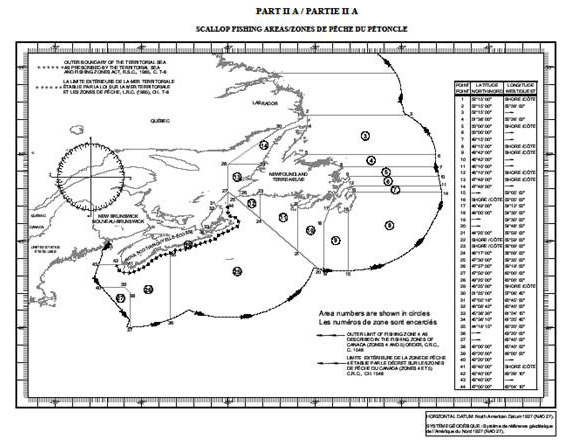
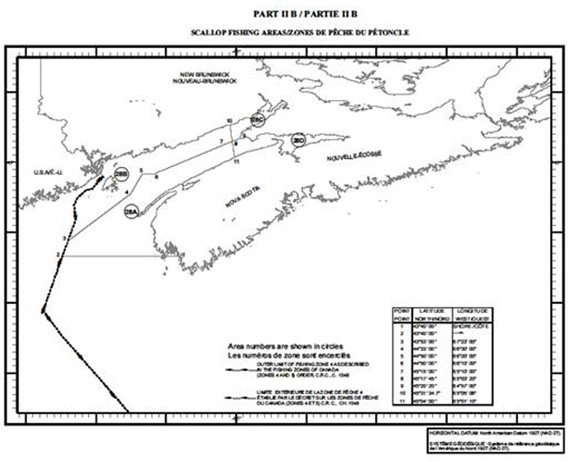
Appendix 3b
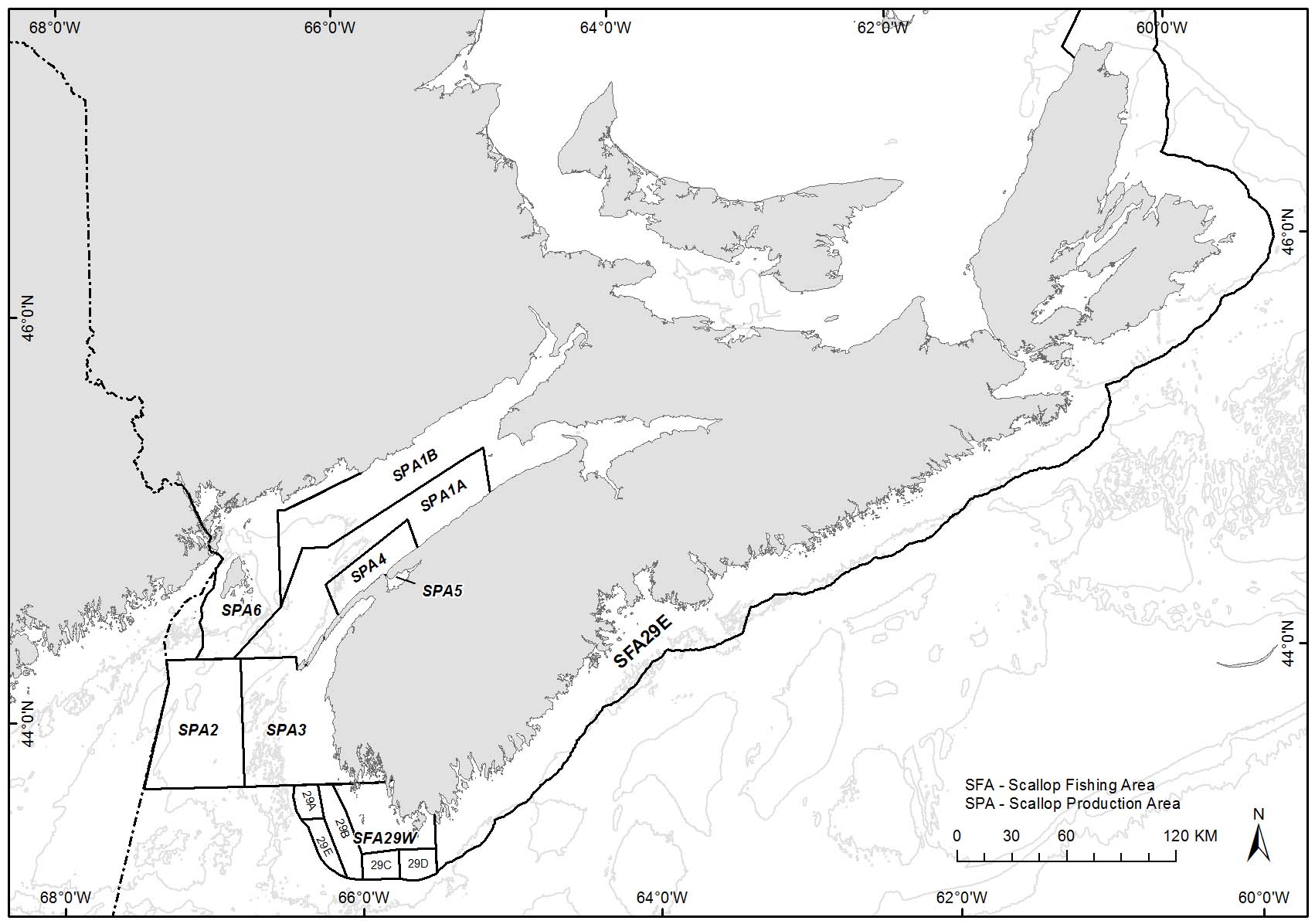
Appendix 3c
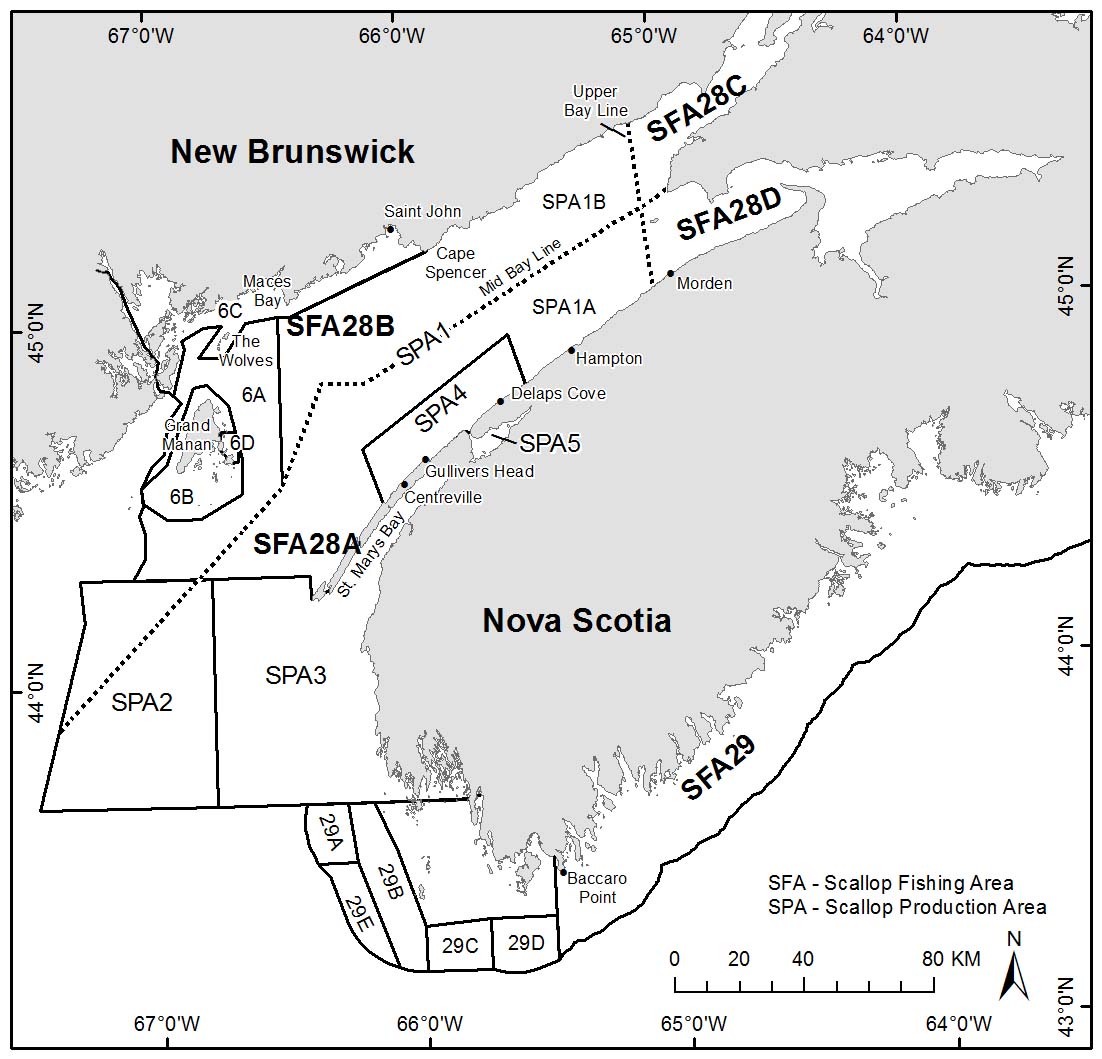
Appendix 4
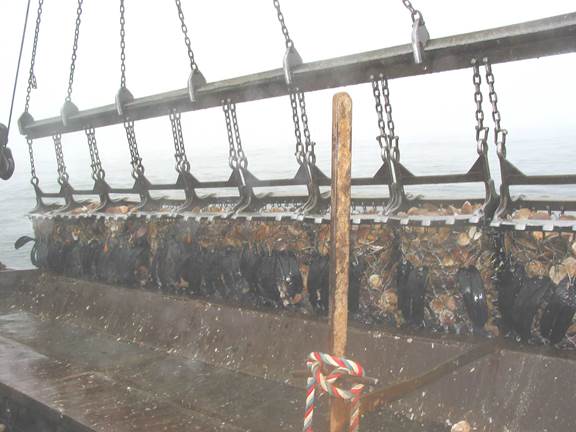
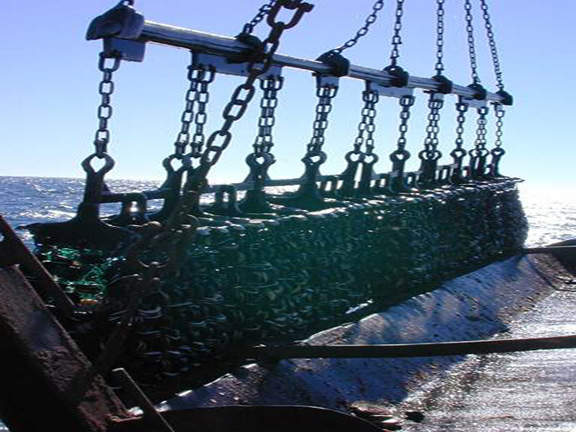
- Date modified: